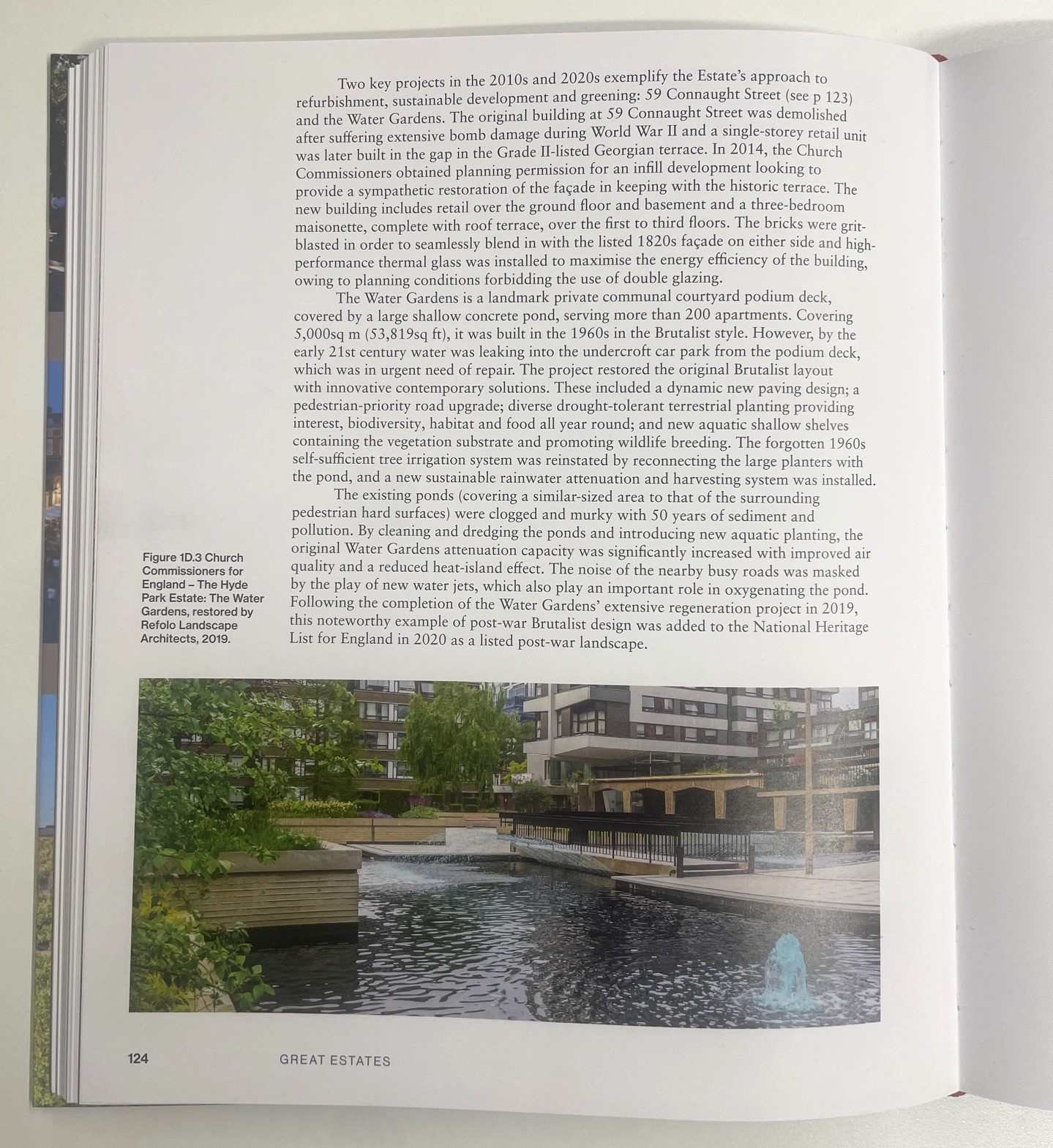Great Estates
NLA Book Launch 28th February 2024
This month we are delighted to announce the launch of ‘Great Estates: Models for Modern Placemaking’ featuring R-LA’s The Water Gardens project, part of the Church Commissioner’s Hyde Park Estate which is renowned for its sustainability credentials. The NLA organised a fantastic evening to celebrate the second edition of this exquisite coffee table book by Sarah Yates.




